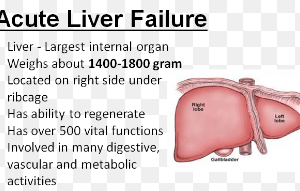So can acute decompensated heart failure occur with higher ejection fractions?
In other words, with mild to moderately reduced ejection fraction in the range of 40 to 50%?
Just what is acute decompensated heart failure?
Also referred to as ADHF, this is a sudden or abrupt worsening of cardiac function.
The symptoms appear quickly vs. the more gradual process of chronic heart failure.
The sudden worsening results in symptoms that can be life threatening due to fluid buildup in the lungs.
Heart failure may indicate either inadequate pumping function or a limited amount of filling where, with normal pressure, not enough blood fills the chamber.
The net result is that the body retains fluid, leading to increased pressure in the lungs.
The heart compensates for this, but sometimes, this muscle loses its steam and…decompensates.
• Must a very low ejection fraction or an advanced stage of disease be present in order for this to happen?
• Or can decompensation happen with a relatively high ejection fraction?
“Yes, and this opens the problem of trying to understand ejection fraction (EF) as well as the issue of heart failure with preserved ejection fraction,” says Roger Mills, MD, cardiologist and former professor of medicine, University of Florida, and author of “240 Beats per Minute. Life with an Unruly Heart.”
The Truth About Ejection Fraction
“First, let’s get rid of the notion that EF is a measure of overall heart function,” says Dr. Mills.
“I’ve had many patients who come for a consultation and say, ‘I’ve only got 25% heart function.’ Not correct.
“EF is a ratio that expresses how much of the blood in the heart, when it’s completely full, gets pumped out with each beat.
“A normal heart ejects about two-thirds of the filled volume when it contracts, so normal ejection fraction is about 66%, plus or minus maybe 6%, so from 60 to just over 70%.
“And the ‘normal’ number depends on things like rest or exercise, emotional state, heart rate and whether or not the individual is well-hydrated.
“When disease impairs the contraction function of the heart, and it’s not able to eject normally, we usually see ‘compensatory remodeling.’ In other words, the heart becomes larger.
Let’s Do the Math Simply
“Just to keep the math easy, let’s say that a normal heart holds about 100 ml of blood when filled and it ejects 60 ml with each beat,” begins Dr. Mills.
“It has an ejection fraction of 60/100 or 60%, and with a heart rate of 75 beats per minute, it will pump 4.5 liters of blood to the body.
“Imagine that something goes wrong, and the ejection fraction drops to 30%, BUT the heart dilates [remolds its shape] to where it holds 200 ml of blood.
“It still pumps 60 ml to the body. 60/200 equals 30%, and at 75 beats per minute, the body still gets 4.5 liters of blood per minute.
“The patient pays a price for that compensatory mechanism, and other things go awry.
“But the ejection fraction is only one part of the picture, and it should not be taken out of context.
“Now so far, we have only talked about how the heart ejects blood or how it empties.
“But it also has to fill. Certain diseases, particularly diabetes and high blood pressure, can take a toll on normal filling.”
Think of the Heart As a Balloon
“I’m sure almost everyone has tried to blow up a kid’s birthday balloon,” says Dr. Mills.
“Some balloons blow up easily. They have a fairly large change in volume for a modest increase in pressure. Technically, we say they are ‘compliant.’
“Every once in a while, you find a balloon that is hard to inflate. You really have to huff and puff to squeeze in the air.
“It has a small change in volume even when subjected to a major increase in pressure. It’s ‘non-compliant.’
“The heart can also become non-compliant. The increase in pressure that’s required to fill it properly results in increased blood pressure in the lungs and shortness of breath.
“And, the non-compliant heart does not tolerate the demands of exercise well at all. This is what we cardiologists call ‘heart failure with preserved ejection fraction’ or HF-pEF.
“If anything, it seems to be a growing problem, as the prevalence of diabetes increases and our population ages. HF-pEF now accounts for half of all heart failure hospitalizations.”
If you or a family member has been diagnosed with congestive or chronic heart failure, and an echocardiogram shows an ejection fraction of between 40 and 50% — which, though poor, is still a lot higher than 25%, that patient can get acute decompensated heart failure at any time.

Dr. Mills is the former medical director of the heart failure and heart transplant service at the University of Florida, was a staff cardiologist at The Cleveland Clinic and has authored over 100 peer-reviewed publications.
 Lorra Garrick has been covering medical, fitness and cybersecurity topics for many years, having written thousands of articles for print magazines and websites, including as a ghostwriter. She’s also a former ACE-certified personal trainer.
Lorra Garrick has been covering medical, fitness and cybersecurity topics for many years, having written thousands of articles for print magazines and websites, including as a ghostwriter. She’s also a former ACE-certified personal trainer.
.



























